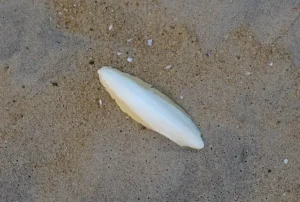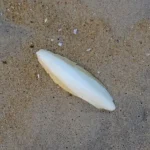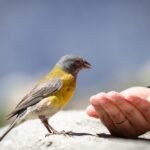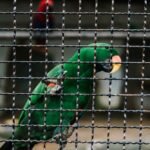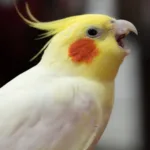Sexing parrots can be difficult, especially if they are not grown adults. Unlike most other animals, parrots do not have visible external genitalia through which their sex can be determined.
In addition to that, most parrot species are sexually monomorphic, which means that males and females of the same species look the same and cannot be sexually distinguished based on physical appearance alone.
However, some parrot species are sexually dimorphic and can be distinguished based on distinct physical features. For parrots that are not dimorphic, DNA analysis and endoscopy are reliable ways of knowing the sex.
Quick Navigation
How To Tell The Sex Of A Parrot?
Below are the commonly used methods to determine the sex of a parrot:
DNA Testing
DNA sexing is the easiest and most common way to know the sex of a parrot. DNA testing requires a blood sample or one feather of the parrot.
The vet collects a small sample of blood and sends it to the lab for testing. The test is performed in a lab where the blood cells are analyzed.
Birds have two types of sex chromosomes – Z and W. Just like how humans inherit one X or Y chromosome from each parent, birds inherit one Z or W chromosome from their parents.
Male birds have two Z chromosomes (ZZ), and females have one Z and one W chromosome (ZW).
DNA sexing uses a method called PCR (Polymerase Chain Reaction), focusing on genes known as CHD1 (Chromodomain Helicase DNA Binding Protein 1).
These genes exist in two forms – CHD1-W on the female-specific W chromosome and CHD1-Z on the Z chromosome found in both males and females.
The laboratory provides a report indicating the sex of the parrot based on the genetic markers found in the DNA analysis. This method is highly accurate and eliminates the need for invasive procedures.
Surgical Sexing
Like all animals, male and female parrots have reproductive organs. However, they are not visible from the outside. Using the surgical sexing method, vets can determine whether a parrot is a male or female.
In this procedure, the parrot is put under anesthesia and incisions are made over a small area of the abdomen. A laparoscope is inserted through the opening, which allows the vet to see the parrot’s reproductive organs.
Before DNA testing became widely accessible, this method was commonly employed. Although it is a safe procedure, it can be stressful for the bird.
Egg-Laying
Quite obviously, if your parrot lays an egg, it is a female. However, this is not the best way of knowing the sex of your parrot.
There is no guarantee whether or not a captive female parrot will lay an egg even after reaching sexual maturity. Unless they are encouraged to breed, most captive parrots never lay eggs.
It is also not the most convenient thing for a parrot owner. Unwanted egg-laying can take a toll on the health of a female parrot.
Since the conditions for breeding are ever favorable in captivity, a parrot may not organically stop laying eggs once its hormones are triggered. This leads to a problem called chronic egg-laying.
Difference Between Male And Female Parrots

Behavior
If you own both a male and female parrot you will notice that they have different behavioral tendencies. These behavioral differences really start to surface when the parrot reaches sexual maturity.
In most but not all parrot species, the males tend to be more vocal and chatty. Whereas the females tend to be aggressive.
During the breeding season, females may exhibit nesting behavior where they look for a secluded and dark space. A male parrot may become territorial and aggressive in the breeding season.
Loudness
In many parrot species, the males tend to be noisier and louder compared to the females. This is because male parrots use vocalizations to attract female parrots.
Female parrots also have exceptional vocal capabilities, but they do not have to contest with other parrots for mating opportunities. The males often sing songs and vocalize in a melodious voice to court the females.
Colors
A parrot’s sex can sometimes be identified by observing their colors. According to Scientific American, most male parrots are more colorful than their female counterparts.
This is because males often have to compete for the female’s attention. A brighter and ornamented plumage gives them the advantage of showcasing themselves. More colorful plumage is seen as a sign of virility by female parrots.
Sexing Dimorphic Parrot Species
There are a small number of parrot species that are sexually dimorphic, which means that their sex can be identified based on certain visual differences. Below are some of the dimorphic species of parrots and how to sex them:
Eclectus Parrots
Eclectus parrots have the most noticeable physical distinction between the sexes. The contrast is so striking that when it was initially discovered, aviculturists thought that the male and female were two different species. (Via Science Direct)
Male eclectic parrots have a bright emerald green color with splashes of red and blue under their wings. They also have an orange-colored beak.
On the other hand, female Eclectus parrots are bright red with purple-colored abdomen and tails. The females also have a black-colored beak.
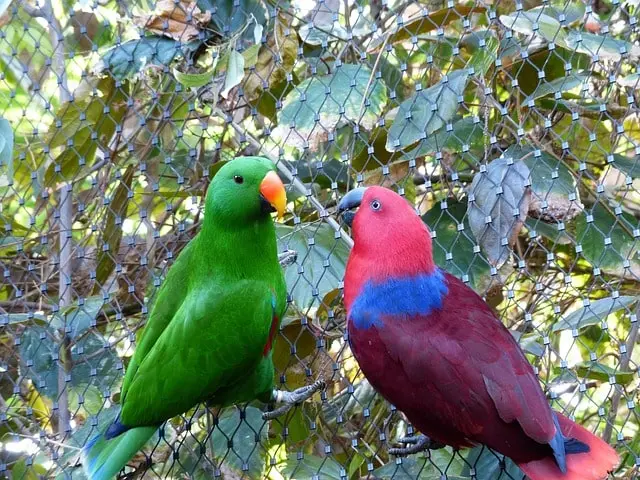
Lovebirds
There exist nine species of lovebirds and only three out of those are sexually dimorphic. In some species, the eye ring is thicker in females than in males.
Also, it is believed that the chest of a female lovebird is broader and the male’s chest is more flat. Most other lovebirds still cannot be told apart by looking at their appearance and do require DNA testing.
Cockatoos
There are 21 subspecies of cockatoos and not all of them are dimorphic. However, certain species of cockatoos can be told apart by looking at their physical features.
Most cockatoo species tend to look similar, but there are subtle differences. For example, in some species of cockatoos, the male cockatoos have black eyes whereas the females have reddish-brown eyes.
The sex of Black cockatoos can be identified based on the color of their beaks. Male black cockatoos have black beaks. In contrast, the females have light-colored beaks.
However, the majority of the cockatoo species cannot be sexed visually and require a DNA test to confirm their gender.
Senegal Parrots
Both male and female Senegal parrots have feather coloration in the combination of green and yellow with grey head feathers.
However, in males, the feathers underneath the tail are almost always colored yellow. Female Senegal parrots have both yellow and green color at the base of their tail feathers.
African Greys
Male and female African grey parrots look the same for the most part, but there are few details that separate them.
Male African Grey parrots are a bit taller than females. They have round bodies and short necks. On the other hand, females are more slender, with longer necks and larger, rounder heads.
Males also have a darker plumage that is uniform along their bodies. While females have a light-to-dark body coloration.
Another way you can tell if it is a boy or a girl is by looking at their tail feathers. Female African Grey parrots have red tail feathers with some silver shades, while male African Greys have fully red tail feathers.
Budgies
A simple way of determining the sex of a budgie is by looking at the color of its cere. The cere is located above a budgie’s beak and has two holes, which are the nostrils. When budgies are young, their cere is colored pink.
But once a budgie grows a few weeks old, the color of the cere starts to change. Male budgies have a blue-colored cere and females have a white-colored cere. Also, during the breeding season, the cere of a female budgie tends to become crusty and develop darker tones.
Cockatiels
There are certain physical attributes of cockatiels that make the males and females apart. After the cockatiels first molt, the males develop more colorful facial feathers.
Indian Ring-Necked Parakeet
Ring-necked parakeets got their name for their unique neck markings. The ring around their necks can also be used to differentiate between the genders.
Male Indian ringneck parakeets develop a distinctive black-colored ring around their necks when they reach maturity. However, female Indian ringneck parakeets do not have such markings.
Parrot Species That Are Monomorphic
Macaws
Macaws do not show sexual dimorphism so the only options are DNA testing or surgical sexing to know if it is a boy or a girl.
Conures
There’s no visual way of telling whether a conure is a male or female. Conures are identical in their appearance and genetic testing is more suited to find out about their gender.
Quaker Parrots
There are visual differences between Quaker parrots of different genders. Quaker Parrots are sexually monomorphic. The only reliable way to identify a Quaker parrot’s gender is through DNA testing.
Pionus Parrots
Pionus Parrots are also monomorphic species of parrots and cannot be sexually differentiated without DNA testing.
What Is Pelvic Sexing In Birds?
Pelvic sexing refers to a technique of identifying a bird’s sex by probing the frontal abdomen area to determine the gap between the pelvic bones. This method is based on the idea that female parrots have broader pelvic regions to facilitate egg-laying.
According to Niles Animal Hospital & Bird Medical Center, there are wide variations in pelvic spacing and sizes of different species of birds, which makes this method unreliable.
This method can only be performed by a breeder who is highly skilled and has experience with handling birds of many species.
Why You Should Know Your Parrot’s Sex As Early As Possible
It can be useful to know the gender If in the future you want to breed your parrot, you would need to know its gender. Identifying your parrot’s gender is also important to prevent mating between two birds if you ever introduce a new bird.
Do Parrots Change Gender?
Parrots cannot change their gender. Many people get the information about their parrot’s gender from the breeder they bought it from. They often get the gender wrong because you cannot tell a baby parrot’s gender.

